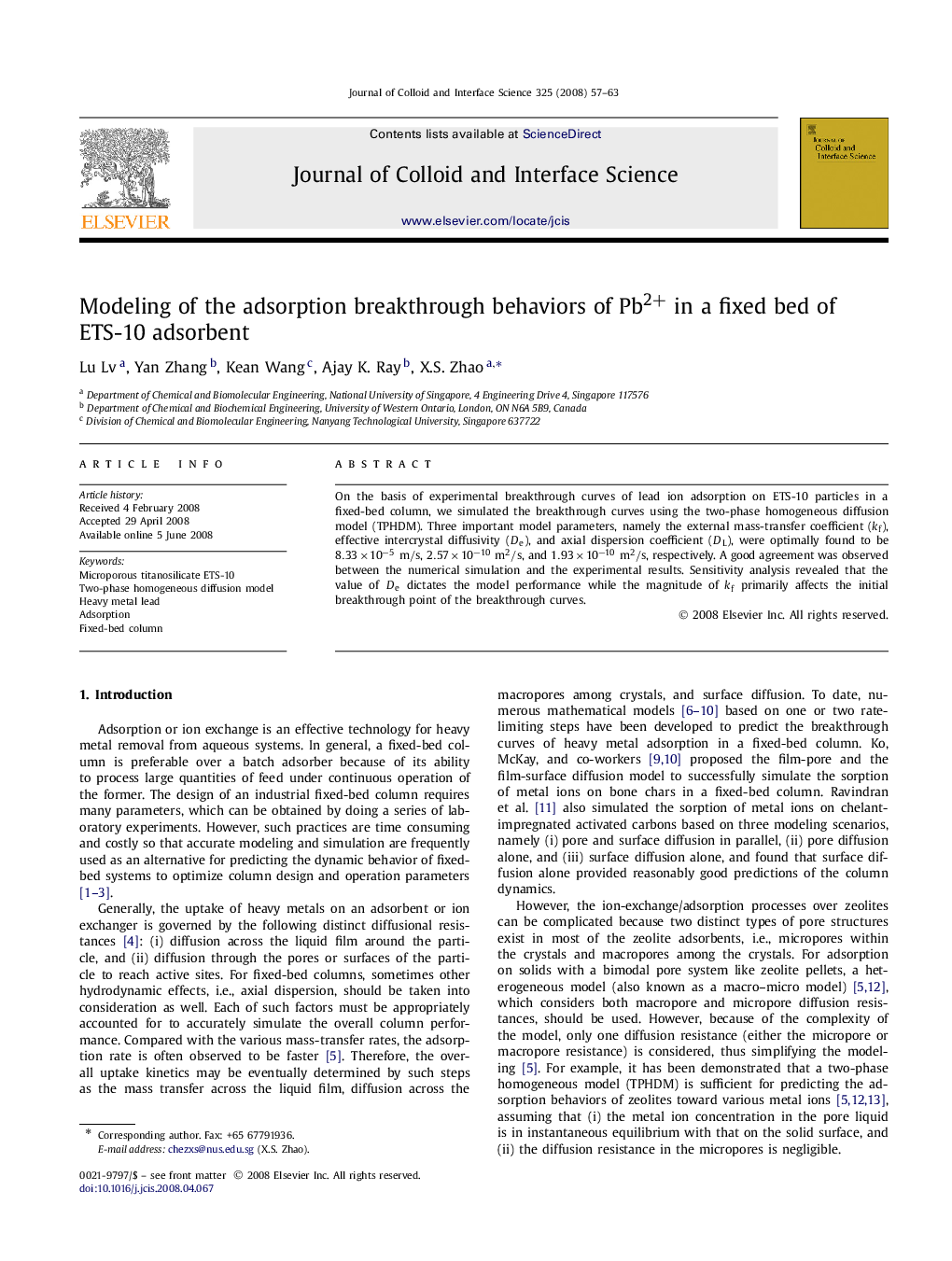| Article ID | Journal | Published Year | Pages | File Type |
|---|---|---|---|---|
| 611042 | Journal of Colloid and Interface Science | 2008 | 7 Pages |
On the basis of experimental breakthrough curves of lead ion adsorption on ETS-10 particles in a fixed-bed column, we simulated the breakthrough curves using the two-phase homogeneous diffusion model (TPHDM). Three important model parameters, namely the external mass-transfer coefficient (kfkf), effective intercrystal diffusivity (DeDe), and axial dispersion coefficient (DLDL), were optimally found to be 8.33×10−5 m/s8.33×10−5 m/s, 2.57×10−10 m2/s2.57×10−10 m2/s, and 1.93×10−10 m2/s1.93×10−10 m2/s, respectively. A good agreement was observed between the numerical simulation and the experimental results. Sensitivity analysis revealed that the value of DeDe dictates the model performance while the magnitude of kfkf primarily affects the initial breakthrough point of the breakthrough curves.
Graphical abstractA two-phase homogeneous diffusion model (TPHDM) has been successfully used to describe and predict breakthrough curves for the fixed-bed sorption of lead ions onto microporous titanosilicate ETS-10 particles. Comparison of model simulation based on the optimized and estimated parameters DLDL, kfkf, and DeDe (C0=5.0 mMC0=5.0 mM, us=2.33×10−4 m/sus=2.33×10−4 m/s, dp=3.5×10−4 mdp=3.5×10−4 m).Figure optionsDownload full-size imageDownload as PowerPoint slide
